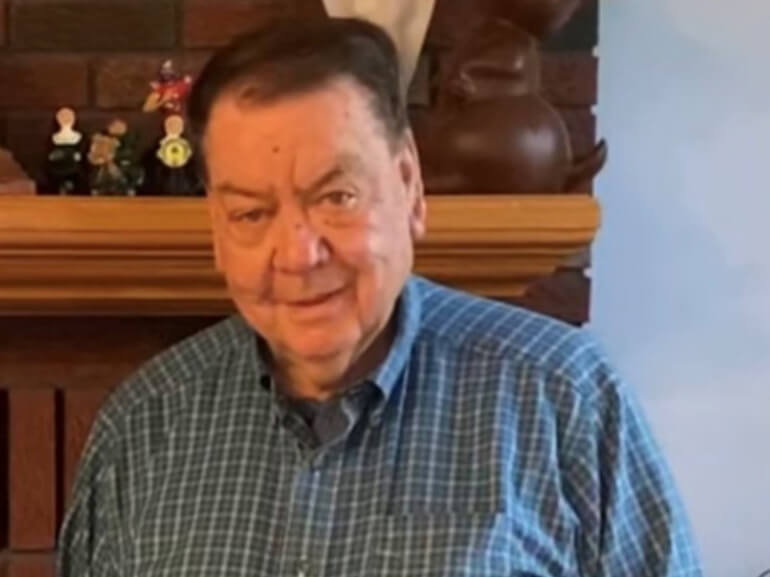Michael's story

Michael (Bobby) Burns was an active 74-year-old who found joy in his retirement by helping his son run the family strip mining business that he started over 40 years ago. When not working, Bobby fished and hunted deer and bear. His wife, Mary, lovingly described him as a “go-er,” not a sitter.
Bobby’s busy lifestyle came to an unexpected halt when he suffered a severe stroke on the left side of his brain. After noticing some worrisome symptoms, his daughter took him to the emergency room at Geisinger Medical Center in Danville, PA, where he received a dose of tPA, a clot dissolving drug. Doctors then performed surgery to remove the clot. The next day, Bobby’s brain went into hemorrhagic transformation, or abnormal brain bleeding that commonly occurs following a stroke. As a result, Bobby was put on a ventilator and a feeding tube was placed. After nine days in the ICU, he stabilized and was transferred to Select Specialty Hospital – Danville for extended recovery and healing time.
While at Select Specialty Hospital, Bobby made good progress liberating from the ventilator in just six days though he still had a tracheostomy and secretions that had to be suctioned frequently. He also had a respiratory infection requiring antibiotics. The pulmonology team thought it best to keep Bobby’s airway support in place, given the additional complications.
Bobby also battled encephalopathy, a severe delirium common after stroke and in critically ill patients requiring long hospital stays. Doctors adjusted medications to improve alertness and orientation. Nurses monitored his blood pressure, which fluctuated frequently.
Physical, occupational and speech therapists attempted activities, but Bobby was not alert enough to participate. A clinical review of his case indicated Bobby might benefit from additional brain rest and lung healing prior to beginning a rehabilitation program that required three hours of daily therapy.
Bobby’s family moved him to a skilled nursing facility, where he spent the next 89 days. There, he regained respiratory health and had airway support discontinued. When swallowing improved, he resumed a regular diet and began limited therapy. Bobby’s family felt he needed more intervention than the nursing home could offer. His daughter, Nicole, requested a referral to an inpatient rehabilitation hospital, and Bobby was admitted to Penn State Health Rehabilitation Hospital.
A physician-led team of nurses and therapists created a plan to help Bobby’s brain and body reconnect.
Physical therapists led balance and mobility activities. First, Bobby practiced sitting at the bed’s edge and then standing for short periods of time. As he regained strength, they began walking exercises to increase endurance, balance and muscle strength. Over time, he increased the distance traveled. Finally, he practiced walking up and down four stairs.
Seeing Bobby walk was a key turning point for the whole family, Nicole said. It helped everyone see recovery was possible.
Occupational therapy sessions focused on enhancing bed mobility, transfer capability and upper body strength. Bobby’s therapists introduced adaptive equipment and strategies to improve independence with daily living activities such as grooming, eating, toileting and dressing.
Speech therapists addressed speech apraxia (difficulty sequencing the appropriate oral motor movements for speech) and aphasia (difficulty with word finding and understanding language). Repeating simple words and following the therapist’s model and cues for tongue placement addressed the apraxia. Bobby used automatic speech tasks, such as reciting the alphabet and counting, to help him find the correct words. Speech therapists also addressed swallowing challenges, which allowed Bobby to transition to a regular, easy-to-chew diet and thin liquids.
Bobby’s family credits Penn State Health Rehabilitation Hospital’s intensive therapy program for giving him the extra push needed to improve endurance and function.
“He has done wonderfully and we have seen so much of an improvement in him,” Nicole said. “Staff wouldn’t just let him say he wasn’t up for it today; they would encourage him and tell him that this is what he needed to do to get home. Then he would do it.”
Several days before Bobby was ready to go home, Mary attended family training to learn how to keep their home safe and easy to navigate. “Therapists showed me how he can stand, get on the commode and shower chair, walk and do stairs,” Mary said. “His right side is still not 100%, but his left side is good, and I feel good about him coming home.”
After more than two weeks at Penn State Health Rehabilitation Hospital, Bobby had met all goals. He could walk 180 feet, go up and down four stairs, perform daily living activities with independence and eat a regular diet. He looked forward to returning to the dream home that he built and being with his family. Being away from his loved ones was among the most difficult challenges he faced during the five months of recovery.
“He was our superhero, and seeing him down broke us,” Nicole said. She encourages others facing similar challenges to remember healing is a slow process but it can happen – “you just have to believe.”